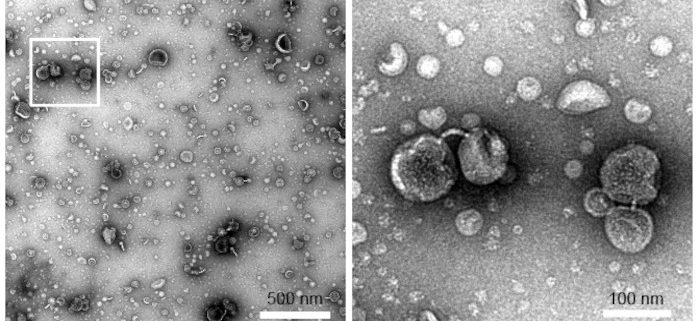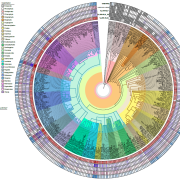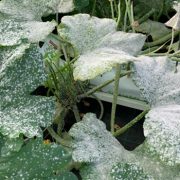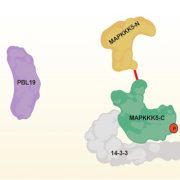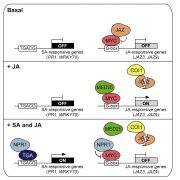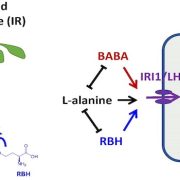Outer membrane vesicles manipulate plant defense responses
Tran et al. found that outer membrane vesicles produced by plant pathogenic bacterium could trigger plant immune responses through the interactions with the plant plasma membrane. Plant Cell. https://doi.org/10.1093/plcell/koab276
By Tuan Minh Tran 1,2 and Yansong Miao 1
- School of Biological Sciences, Nanyang Technological University, Singapore 637551
- Department of Biology, University of South Alabama, Mobile AL 36688, USA
Background: Outer membrane vesicles (OMVs) of Gram-negative bacteria are lipid sacs that bud from the outer membranes of bacteria. Many bacteria produce OMVs throughout their life cycle. OMVs carry a large number of proteins, lipids, and RNAs, which may play significant roles in the interactions between bacteria and host cells. OMVs have long been known to elicit plant immune responses, although the underlying molecular mechanisms by which OMVs enter the plant host and how they trigger plant immunity remain elusive. Here, we used the bacterial pathogen Xanthomonas campestris pv. campestris (Xcc) as the model to study how OMVs start their communication with the plant by selective integration onto the plasma membrane nano-compartments.
Question: We wanted to know whether and how OMVs insert onto plant surfaces and/or are internalized, and how the interactions between OMVs and plant cells affect plant immune responses to bacterial infection.
Findings: We found that Xcc OMVs are directly inserted onto the plant surface with a striking spatial alignment with plant nanodomains⏤regions of the membrane that are highly enriched in ordered lipids, such as sterols and sphingolipids. After insertion, OMVs were not internalized following the conventional endocytic pathway, but instead remained on the plant plasma membrane and enhanced lipid order and the assembly of nanodomains of the plasma membrane, suggesting an active function of OMVs in interacting with the plant plasma membrane during infection. The bi-directionally coordinated nanodomain-guided insertion and enhancement in membrane lipid order are mediated by the saturated lipid carried in OMVs membrane. We also show that OMV-mediated priming of plant immunity is mediated by membrane nanodomain formation.
Next steps: Although we showed that OMVs could insert into the plant plasma membrane, the fate of OMV cargo content remains to be elucidated. It would be elyspecial interesting to identify the trafficking route of major functional OMV components (effector proteins, DNA, RNA, lipopolysaccharides, etc.) and how they interfere with the plant immune responses through OMV-mediated integration into the host.
Reference:
Tuan Minh Tran, Choon-Peng Chng, Xiaoming Pu, Zhiming Ma, Xiao Han, Xiaolin Liu, Liang Yang, Changjin Huang, Yansong Miao (2021). Potentiation of plant defense by bacterial outer membrane vesicles is mediated by membrane nanodomains. https://doi.org/10.1093/plcell/koab276


